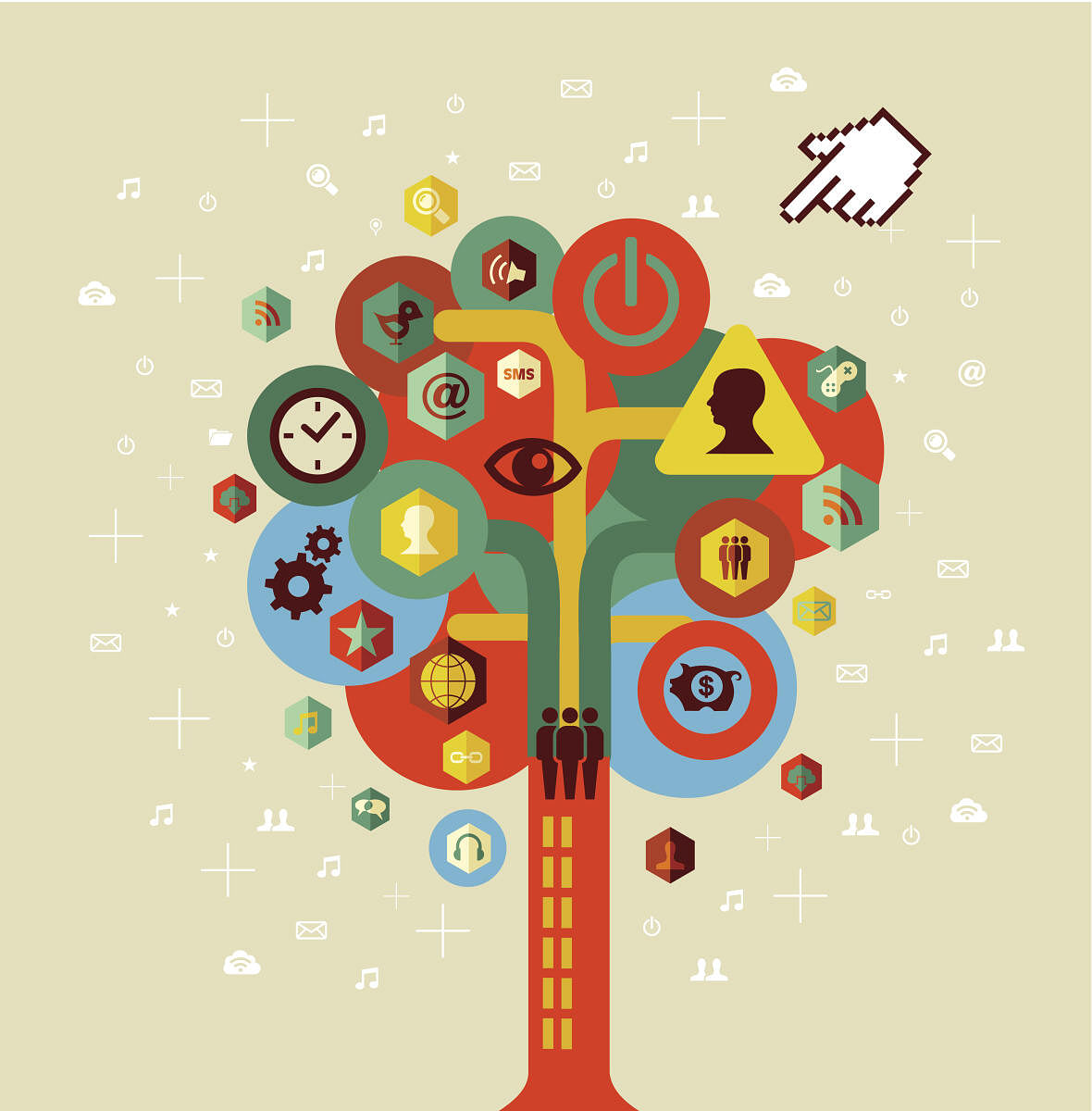

I was having a conversation with a friend recently about the extravagant exhibition of affluence at a prominent socialite’s wedding. We agreed it was in bad taste, and she went on to reminisce fondly about my wedding, which took place in a small (but not inexpensive) traditional home in Bengaluru that has been repurposed into a mantapa. I came away from the conversation feeling pretty good about myself and my life choices, but then I thought a little deeper. It also helped that I had been doing the research for this article at that point.
I realised that while it might be true that my wedding happened at a small venue, it’s also true that we chose it to display aspects of ourselves that we wanted to highlight. “We don’t care about displaying our wealth”: “We have good taste because this venue is different from the usual fare”: “We believe marriage ought to be a cosy affair between close friends and relatives”, and so on, the chosen venue seemed to be shouting out to the attendees.
To be sure, none of this was carefully calculated. It is only in retrospect that I am able to see the signals my wedding venue was sending out. This is a feature of social signalling — it is usually unconscious, and it is how our actions and decisions in public are chosen to let people around us know who we are and what attributes of ours we would like to highlight.
Many shades of signalling
Signalling, of course, is common in the animal world, where our bestial brethren have to rely on nonverbal cues to indicate how desirable they are to mates or how dangerous they might be to potential predators. While humans have developed a more sophisticated way to communicate in the form of language, we still rely on non-verbal signals a lot.
Signals come in different shades — they can be conscious, or unconscious; costly, or cheap; honest, or dishonest. A person who recently came into a lot of money makes sure the world knows by wearing the flashiest clothes possible and buying a mansion. A social worker only uses cloth bags when out in public, and a teenager lets people know that he’s a rebel by wearing torn jeans and only listening to the kind of music his parents would disapprove of.
While it is hard to know people’s motivations, these examples are likely those of conscious signals. They appear to be carefully thought out and displayed to an audience to show a person in the light that they wish to be seen.
But how can signals be unconscious? Whether we intend to signal or not, people around us are likely to perceive some signal from us. This is inevitable and goes to show we cannot really escape signalling. People who are new to flying in an aeroplane might dress up for the event because to them it is a special occasion. But someone who is used to flying might dress in the most comfortable attire possible.
Both these could be interpreted as signals — of new wealth, in the former case, or a signal of not having to care about displaying wealth, in the latter. Whether they intended to or not, then, the two fliers have signalled something about themselves, true or not, to the observer.
Signalling, then, is as much about the receiver and their own biases as it is about the sender. In fact, it’s possible that we’ve evolved to not only send signals to others but also to be able to pick up on those that other people put out.
The signals we send about ourselves, whether conscious or not, are usually tailored to our intended audience. They depend on which group we yearn to belong to and which ones we’d like to scorn. Sometimes, like when we are in a new and unfamiliar environment, we may want to blend in, and at other times, we may want to separate ourselves from the crowd to feel special.
Signalling without signalling
One way we do this is by counter-signalling. This is when we deliberately downplay or conceal our social signals, or even display opposite signals, to show our confidence and superiority. Counter-signalling is often used by people who have high status or belong to an elite group, and who do not need to prove themselves to others.
For example, a billionaire might wear plain clothes and drive an old car to show that they are not interested in material things. The teenager who wears only torn jeans to show “they don’t care about their appearance” is also quite possibly counter-signalling.
Counter-signalling might work in favour of people who already hold a high status in society but might backfire on others. Mark Zuckerberg can afford to wear grey T-shirts every day to work because he’s already in a position of power. A junior executive who’s looking to move up the career ladder might not get away with such counter-signalling.
Costly versus cheap signals
Dr Rob Henderson, a psychologist with an interest in social signalling, says it’s also important to make the distinction between costly and cheap signals. Let’s say, I care about a social issue. There are two kinds of signals I can give out. The first, and possibly, the more common of the two, especially on social media (which is incidentally an excellent forum for signalling), is the cheap kind. I could sit comfortably in an AC room and type out tweet after tweet about how much I care about this matter. Or, I could actually take an action that costs me something — say, a significant investment of time, or money — to contribute to ameliorating it.
When somebody does something about an issue that not too many people would, it can still be viewed as a signal, but it is a costly one. Costly signals not only indicate that a person actually cares about an issue, but they also often tell us more about who a person really is than a tweet would.
“Imagine a guy jumps in front of a bullet to save his best friend. Is this signalling? Well, yes. It is a signal of the person’s love for his friend, his moral character, his willingness to self-sacrifice, and so on.
But taking a bullet for a friend is not “just a signal” in the sense that it is the same as cheap talk. It is a costly, hard-to-fake indicator of desirable attributes.
And in that split second before catching the bullet, the guy isn’t thinking “If I do this, people will think I am brave, compassionate, righteous, etc,” writes Henderson.
Luxury beliefs
And then there are luxury beliefs, which are ideas that high-status individuals hold on to in order to separate themselves from the masses. These are beliefs that are costly to hold or express, either financially, socially, or psychologically, and they signal our wealth, education, or moral superiority. Luxury beliefs are often controversial, unconventional, or seemingly progressive, and they appear to challenge the norms and values of mainstream society.
We care a lot about our status in society, and research has shown that respect and admiration in the eyes of others around us matter a great deal more than income or wealth for our overall happiness.
It is unsurprising, then, that we find imaginative ways to signal (or countersignal) our status. Henderson argues that as trendy clothing and accessories have become more and more affordable, the elites are forced to get creative in the ways they signal their status. Since luxury goods have lost some of their status-signalling ability, people tend to resort to exhibiting luxury beliefs.
For example, some people may claim to only shop at a high-end clothing store that sells eco-friendly clothing to signal their concern for the environment. However, it’s important to note that these beliefs can be impractical for most people to hold, and the impact of these actions may be minimal.
Although luxury beliefs can be seen as a form of dishonest signalling, they often stem from our inherent need to view ourselves as always being right or perfect. We may attach deeper meanings to our beliefs or actions than they actually hold, which can lead to self-deception. It can be important to acknowledge that our beliefs and actions may not always have profound meaning or impact.
The spotlight effect
A major reason we devote so much of our thoughts to signalling, counter-signalling and luxury beliefs is that we often overestimate how much people notice us or how much they think of us. This is the ‘spotlight effect’ — we are the centre of our own worlds and every time we step out, we feel as if a spotlight is shining on us. While it might be true that people are good at picking up the signals we send out, it is a fact that far fewer people than we realise even notice us or make judgements about us. Understanding this can be incredibly freeing.
In summary, we cannot completely control how others interpret our actions, but we do have agency over the degree to which we allow signalling to influence our behaviour. Prioritising the opinions of others can result in insincerity and reliance on signals and countersignals. To maintain authenticity, it is crucial to examine our motivations and understand the driving forces behind our actions.
The author is a neuroscience PhD turned science writer who is fascinated by the workings of the brain and how we can ‘rewire’ it to our advantage.
The Mind’s Eye is a bi-monthly column that explores neuroscience in everyday life.